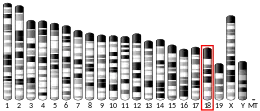STARD4
StAR-related lipid transfer protein 4 (STARD4) is a soluble protein involved in cholesterol transport. It can transfer up to 7 sterol molecules per minute between artificial membranes.[5]
| STARD4 | |||||||||||||||||||||||||||||||||||||||||||||||||||
|---|---|---|---|---|---|---|---|---|---|---|---|---|---|---|---|---|---|---|---|---|---|---|---|---|---|---|---|---|---|---|---|---|---|---|---|---|---|---|---|---|---|---|---|---|---|---|---|---|---|---|---|
| Identifiers | |||||||||||||||||||||||||||||||||||||||||||||||||||
| Aliases | STARD4, StAR related lipid transfer domain containing 4 | ||||||||||||||||||||||||||||||||||||||||||||||||||
| External IDs | OMIM: 607049 MGI: 2156764 HomoloGene: 15874 GeneCards: STARD4 | ||||||||||||||||||||||||||||||||||||||||||||||||||
| |||||||||||||||||||||||||||||||||||||||||||||||||||
| |||||||||||||||||||||||||||||||||||||||||||||||||||
| |||||||||||||||||||||||||||||||||||||||||||||||||||
| |||||||||||||||||||||||||||||||||||||||||||||||||||
| |||||||||||||||||||||||||||||||||||||||||||||||||||
| Wikidata | |||||||||||||||||||||||||||||||||||||||||||||||||||
| |||||||||||||||||||||||||||||||||||||||||||||||||||
Function
STARD4 may regulate cholesterol levels in many cells, including in the liver. STARD4 has specifically been linked to the movement of cholesterol to the endoplasmic reticulum. The protein is associated with the endoplasmic reticulum and lipid droplets.[6] Increases in the protein relate to cell stress.[7]
High levels of STARD4 increases the synthesis of bile acids and cholesterol esters in liver hepatocytes.[8] Reductions in cholesterol synthesis by cells increase STARD4 levels while StarD4 declines in mice fed a high cholesterol diet.[9][10]
Increases in levels of either master gene regulator SREBP-1a or SREBP2, which both promote the production of proteins involved in cholesterol synthesis, increase StarD4 levels in mouse liver.[11] Conversely, increased STARD4 increases active SREBP2 levels.
Loss of the protein in mice has little effect.[12] Mice without functional STARD4 weigh less and females tend to have lower cholesterol profiles. The most dramatic change observed to date is a reduction in NPC-1, a protein involved in bringing cholesterol into cells.
Structure
The protein is 205 amino acids long in the human (224 in the mouse) and almost entirely consists of a StAR-related transfer (START) domain. It also lends its name to the subgroup of START domain proteins it is part of, StarD4. This subfamily includes STARD5 and STARD6 and is closely related to the StarD1/D3 group.
References
- GRCh38: Ensembl release 89: ENSG00000164211 - Ensembl, May 2017
- GRCm38: Ensembl release 89: ENSMUSG00000024378 - Ensembl, May 2017
- "Human PubMed Reference:". National Center for Biotechnology Information, U.S. National Library of Medicine.
- "Mouse PubMed Reference:". National Center for Biotechnology Information, U.S. National Library of Medicine.
- Mesmin B, Pipalia NH, Lund FW, Ramlall TF, Sokolov A, Eliezer D, Maxfield FR (November 2011). "STARD4 abundance regulates sterol transport and sensing". Molecular Biology of the Cell. 22 (21): 4004–15. doi:10.1091/mbc.E11-04-0372. PMC 3204063. PMID 21900492.
- Rodriguez-Agudo D, Calderon-Dominguez M, Ren S, Marques D, Redford K, Medina-Torres MA, Hylemon P, Gil G, Pandak WM (October 2011). "Subcellular localization and regulation of StarD4 protein in macrophages and fibroblasts". Biochimica et Biophysica Acta (BBA) - Molecular and Cell Biology of Lipids. 1811 (10): 597–606. doi:10.1016/j.bbalip.2011.06.028. PMC 3156897. PMID 21767660.
- Yamada S, Yamaguchi T, Hosoda A, Iwawaki T, Kohno K (May 2006). "Regulation of human STARD4 gene expression under endoplasmic reticulum stress". Biochemical and Biophysical Research Communications. 343 (4): 1079–85. doi:10.1016/j.bbrc.2006.03.051. PMID 16579971.
- Rodriguez-Agudo D, Ren S, Wong E, Marques D, Redford K, Gil G, Hylemon P, Pandak WM (July 2008). "Intracellular cholesterol transporter StarD4 binds free cholesterol and increases cholesteryl ester formation". Journal of Lipid Research. 49 (7): 1409–19. doi:10.1194/jlr.M700537-JLR200. PMC 2431108. PMID 18403318.
- Soccio RE, Adams RM, Maxwell KN, Breslow JL (May 2005). "Differential gene regulation of StarD4 and StarD5 cholesterol transfer proteins. Activation of StarD4 by sterol regulatory element-binding protein-2 and StarD5 by endoplasmic reticulum stress". The Journal of Biological Chemistry. 280 (19): 19410–8. doi:10.1074/jbc.M501778200. PMID 15760897.
- Soccio RE, Adams RM, Romanowski MJ, Sehayek E, Burley SK, Breslow JL (May 2002). "The cholesterol-regulated StarD4 gene encodes a StAR-related lipid transfer protein with two closely related homologues, StarD5 and StarD6". Proceedings of the National Academy of Sciences of the United States of America. 99 (10): 6943–8. Bibcode:2002PNAS...99.6943S. doi:10.1073/pnas.052143799. PMC 124508. PMID 12011452.
- Horton JD, Shah NA, Warrington JA, Anderson NN, Park SW, Brown MS, Goldstein JL (October 2003). "Combined analysis of oligonucleotide microarray data from transgenic and knockout mice identifies direct SREBP target genes". Proceedings of the National Academy of Sciences of the United States of America. 100 (21): 12027–32. Bibcode:2003PNAS..10012027H. doi:10.1073/pnas.1534923100. PMC 218707. PMID 14512514.
- Riegelhaupt JJ, Waase MP, Garbarino J, Cruz DE, Breslow JL (May 2010). "Targeted disruption of steroidogenic acute regulatory protein D4 leads to modest weight reduction and minor alterations in lipid metabolism". Journal of Lipid Research. 51 (5): 1134–43. doi:10.1194/jlr.M003095. PMC 2853440. PMID 19965609.



